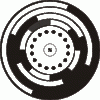Hi all. I just got my amateur radio license 1 week ago and now I wan't (or try) to build a rotation system on which I can put my Yagi for 2m band and use it to point the antenna to different repeaters.
For the control I'm planing to use 2 relays to control the polarity of the current to a DC motor that will drive the rig
What I want to do next is to build some kind of a feedback system which I will input to a GUI program so I can see in which direction is the antenna pointed at that moment. I'm thinking of getting the input in the 0x379 (Parallel port status input) and integrating it to the program.
I have a couple of ides of accomplishing this,
#1. Use a simple mouse scroll wheel that I will attach to the rotor of the motor directly or using some kind of a gear system so I can have a more precise reading.
#2. Using a potentiometer attached to the rotor, again directly or with a set of gears and somehow (Probably A/D converter) get a digital signal from it.
The most important thing (I think) is to get a countable input, so I can count it in the program and based on the number of impulses to get the direction thingy in the program moving =)
If anyone has any other ideas please let them out I'm open to suggestions cos at the end I want to have a 100% functional system and not be forced to climb on the roof every few days to reposition the whole thing
I'm open to suggestions cos at the end I want to have a 100% functional system and not be forced to climb on the roof every few days to reposition the whole thing 
Thanks in advance,
Aleks
For the control I'm planing to use 2 relays to control the polarity of the current to a DC motor that will drive the rig
What I want to do next is to build some kind of a feedback system which I will input to a GUI program so I can see in which direction is the antenna pointed at that moment. I'm thinking of getting the input in the 0x379 (Parallel port status input) and integrating it to the program.
I have a couple of ides of accomplishing this,
#1. Use a simple mouse scroll wheel that I will attach to the rotor of the motor directly or using some kind of a gear system so I can have a more precise reading.
#2. Using a potentiometer attached to the rotor, again directly or with a set of gears and somehow (Probably A/D converter) get a digital signal from it.
The most important thing (I think) is to get a countable input, so I can count it in the program and based on the number of impulses to get the direction thingy in the program moving =)
If anyone has any other ideas please let them out
Thanks in advance,
Aleks

